-
 Bitcoin
Bitcoin $83,313.6693
-1.61% -
 Ethereum
Ethereum $1,824.6416
-3.06% -
 Tether USDt
Tether USDt $0.9999
0.00% -
 XRP
XRP $2.0615
-1.92% -
 BNB
BNB $601.0287
-0.09% -
 Solana
Solana $119.7880
-4.08% -
 USDC
USDC $0.9999
-0.01% -
 Dogecoin
Dogecoin $0.1661
-3.40% -
 Cardano
Cardano $0.6510
-3.65% -
 TRON
TRON $0.2380
-0.22% -
 Toncoin
Toncoin $3.7959
-5.14% -
 UNUS SED LEO
UNUS SED LEO $9.3951
-0.16% -
 Chainlink
Chainlink $13.1588
-4.27% -
 Stellar
Stellar $0.2636
-1.98% -
 Sui
Sui $2.4047
1.82% -
 Avalanche
Avalanche $18.6850
-3.03% -
 Shiba Inu
Shiba Inu $0.0...01235
-0.22% -
 Hedera
Hedera $0.1650
-0.75% -
 Polkadot
Polkadot $4.0373
-1.82% -
 Litecoin
Litecoin $83.5682
0.58% -
 MANTRA
MANTRA $6.4443
3.75% -
 Bitcoin Cash
Bitcoin Cash $303.2630
-0.75% -
 Bitget Token
Bitget Token $4.5497
-1.20% -
 Dai
Dai $1.0000
0.00% -
 Ethena USDe
Ethena USDe $0.9998
-0.01% -
 Pi
Pi $0.6605
-4.81% -
 Hyperliquid
Hyperliquid $12.4411
-6.29% -
 Monero
Monero $216.2784
-1.00% -
 Uniswap
Uniswap $6.0092
-2.13% -
 Aptos
Aptos $5.2761
-0.41%
What Is a Distributed Ledger?
Distributed ledgers, often known as blockchains, offer decentralized and secure record-keeping systems with benefits such as decentralization, immutability, automation, and scalability.
Dec 16, 2024 at 11:15 pm
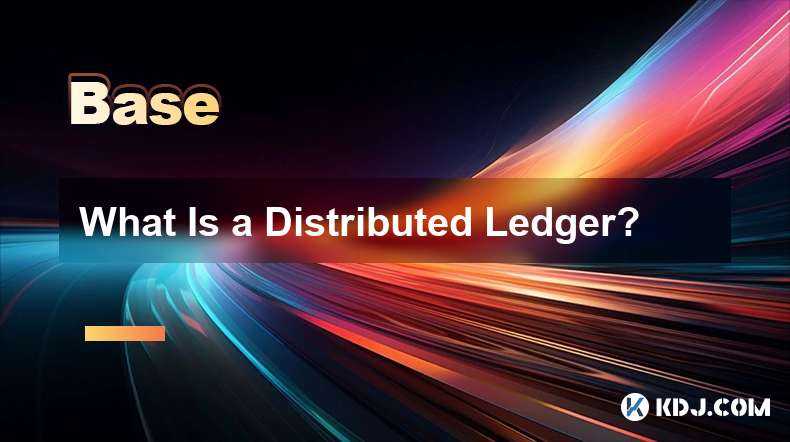
Key Points:
- Origins, Evolution, and Applications of Distributed Ledgers
- Core Concepts: Consensus Mechanisms, Data Structures, and Cryptography
- Benefits and Limitations of Distributed Ledgers
- Use Cases and Impact in Cryptocurrency and Blockchain Ecosystem
- Key Distinctions and Comparisons with Traditional Databases
What is a Distributed Ledger?
A distributed ledger, often referred to as a blockchain, is a decentralized and cryptographically secure record-keeping system that maintains a continuously growing list of records, called blocks. Each block contains a timestamp, a hash of the previous block, and transaction data. Once a block is added to the distributed ledger, it cannot be altered retrospectively, ensuring the immutability of the stored data.
Origins, Evolution, and Applications of Distributed Ledgers:
The concept of distributed ledgers emerged in the 1990s, but it was the introduction of Bitcoin in 2008 that brought widespread attention to its potential. Bitcoin's underlying blockchain technology showcased the ability of distributed ledgers to facilitate secure and transparent transactions without the need for intermediaries.
Today, distributed ledgers are being leveraged across a wide range of applications beyond cryptocurrency, including supply chain management, finance, healthcare, and voting systems.
Core Concepts:
- Consensus Mechanisms:
Consensus mechanisms are essential for ensuring the integrity and correctness of distributed ledgers. They dictate the process by which nodes in a network agree on the validity of new blocks to be added to the ledger. Common consensus mechanisms include Proof of Work (PoW), Proof of Stake (PoS), and voting-based algorithms.
- Data Structures:
Distributed ledgers typically employ data structures such as Merkle trees or Directed Acyclic Graphs (DAGs) to organize and index transaction data efficiently. These structures enable quick and efficient search and verification processes while maintaining data integrity.
- Cryptography:
Cryptography plays a pivotal role in safeguarding distributed ledgers. Cryptographic techniques such as digital signatures, hashing algorithms, and encryption are utilized to ensure data authenticity, privacy, and non-repudiation.
Benefits and Limitations of Distributed Ledgers:
- Decentralization: Distributed ledgers eliminate intermediaries and reduce the risk of centralization, fostering greater trust and transparency.
- Immutability: Once data is recorded on a distributed ledger, it is virtually impossible to alter or remove it, ensuring the integrity of stored information.
- Automation and Cost Reduction: Distributed ledgers automate processes and reduce transactional costs by eliminating the need for intermediaries and reconciliation efforts.
- Scalability: Distributed ledgers offer scalability and high transaction throughput by leveraging parallel processing and distributed architectures.
Drawbacks:
- Slower Transactions: Distributed ledger systems may face performance constraints compared to centralized databases due to the decentralized nature of consensus mechanisms.
- Energy Consumption: Certain consensus mechanisms, such as Proof of Work, can be energy-intensive, raising environmental concerns.
- Privacy and Data Ownership: Distributed ledgers may present concerns regarding privacy as transaction data is publicly available in most cases.
- Susceptibility to Forks: Distributed ledgers are prone to forks, which occur when two or more versions of the same ledger exist.
Use Cases and Impact in Cryptocurrency and Blockchain Ecosystem:
Distributed ledgers serve as the foundation of cryptocurrency systems, enabling secure and transparent transactions without intermediaries. They facilitate the creation of decentralized cryptocurrencies, smart contracts, and decentralized applications (dApps).
Beyond cryptocurrency, distributed ledgers are also being explored for a myriad of use cases:
- Supply chain management: Tracking the movement of goods and materials, ensuring transparency and reducing fraud.
- Finance: Facilitating cross-border payments, automating settlement processes, and providing alternative funding options.
- Healthcare: Securely storing and sharing patient data, enhancing collaboration among healthcare providers.
- Voting systems: Ensuring the integrity of elections, reducing voter fraud, and increasing transparency in polling processes.
- Identity management: Providing secure and portable digital identities, enabling seamless and privacy-preserving online interactions.
FAQ:
- Q: What is the difference between a distributed ledger and a traditional database?
A: Distributed ledgers are decentralized and distributed across a network of nodes, while traditional databases are centralized, controlled by a single entity. Distributed ledgers are immutable, while traditional databases allow modifications and deletions. Distributed ledgers provide a higher level of transparency and security due to their decentralized nature.
- Q: How secure is a distributed ledger?
A: Distributed ledgers are highly secure due to the use of cryptographic techniques and consensus mechanisms. The immutability of data and the distributed nature of the network make it extremely difficult to compromise or alter information on a distributed ledger.
- Q: Are distributed ledgers a better choice than traditional databases in all scenarios?
A: Distributed ledgers offer unique advantages in terms of decentralization, immutability, and security. However, they may not be the optimal choice for centralized applications, such as handling sensitive data or applications that require high transaction throughput.
- Q: What are some applications of distributed ledgers aside from cryptocurrency?
A: Beyond cryptocurrency, distributed ledgers are being explored for various use cases, including supply chain management, finance, healthcare, voting systems, identity management, digital asset management, and legal documentation.
Disclaimer:info@kdj.com
The information provided is not trading advice. kdj.com does not assume any responsibility for any investments made based on the information provided in this article. Cryptocurrencies are highly volatile and it is highly recommended that you invest with caution after thorough research!
If you believe that the content used on this website infringes your copyright, please contact us immediately (info@kdj.com) and we will delete it promptly.
- Mutuum Finance (MUTM) Is One of the Top Solid DeFi Ventures, Alongside Pepe (PEPE) and Ethereum (ETH)
- 2025-04-03 13:15:13
- Mutuum Finance (MUTM) Surpasses $6 Million in Funding, With More Than 7,700 Holders Taking Their Positions Early
- 2025-04-03 13:15:13
- Bitcoin [BTC] Exchange Outflows Spike as Over 20,000 BTC Move to Market
- 2025-04-03 13:10:13
- Over 21,000 Bitcoins Transferred to Exchanges in the Last 96 Hours, Marking a Significant Spike in Exchange Reserves
- 2025-04-03 13:10:13
- Injective Protocol to Host Injective Builder Day in Seoul with Four Pillars on April 11th
- 2025-04-03 13:05:13
- STEPN to Launch a Major Update on April 3rd, Introducing New Ways to Play, Compete, and Rise to the Top
- 2025-04-03 13:05:13
Related knowledge
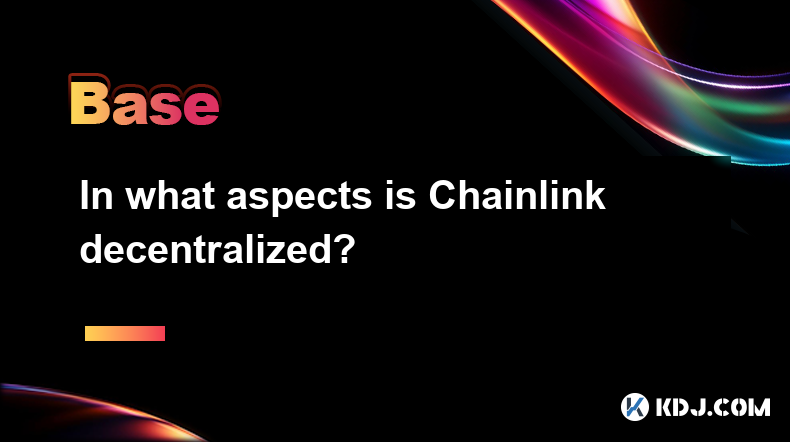
In what aspects is Chainlink decentralized?
Apr 02,2025 at 05:49pm
Chainlink is a decentralized oracle network that plays a crucial role in connecting smart contracts on blockchain networks with real-world data. Its decentralization is reflected in multiple aspects, ensuring the network's security, reliability, and integrity. This article delves into the various ways Chainlink achieves decentralization, including its n...

How does Chainlink connect smart contracts with real-world data?
Apr 02,2025 at 03:56pm
Chainlink is a decentralized oracle network that plays a crucial role in connecting smart contracts on blockchain platforms with real-world data. Smart contracts are self-executing contracts with the terms of the agreement directly written into code, but they can only interact with on-chain data. To access real-world data, such as stock prices, weather ...
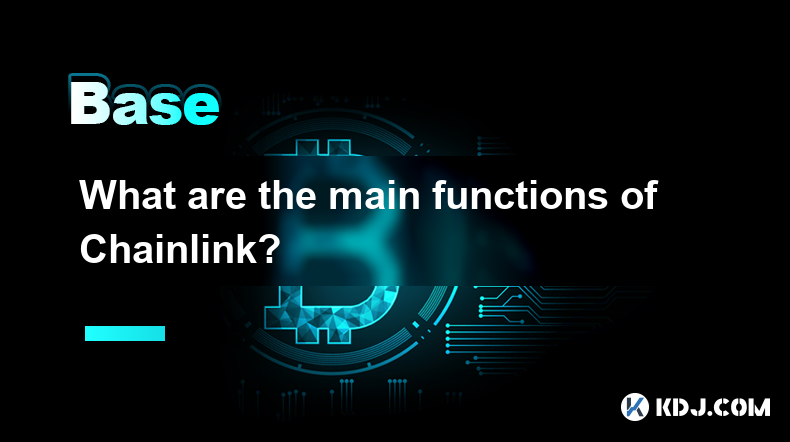
What are the main functions of Chainlink?
Apr 02,2025 at 11:49pm
Chainlink is a decentralized oracle network that plays a crucial role in connecting smart contracts with real-world data and external APIs. The primary function of Chainlink is to facilitate the seamless integration of off-chain data into on-chain smart contracts, enabling them to execute based on real-world events and information. This integration is v...

How does Chainlink work?
Apr 03,2025 at 01:50am
Chainlink is a decentralized oracle network that connects smart contracts with real-world data and external APIs. It plays a crucial role in the blockchain ecosystem by enabling smart contracts to interact with data outside their native blockchain environment. This connectivity is essential for smart contracts to execute based on real-world events and d...
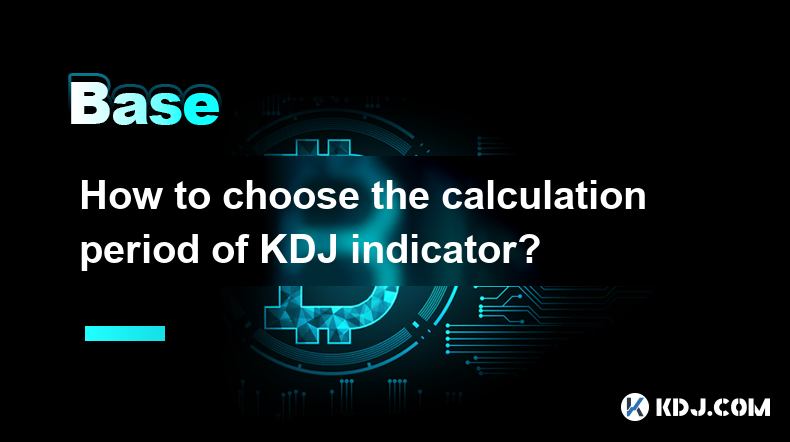
How to choose the calculation period of KDJ indicator?
Apr 02,2025 at 01:00pm
The KDJ indicator, also known as the Stochastic Oscillator, is a popular technical analysis tool used by cryptocurrency traders to identify potential buy and sell signals. The calculation period of the KDJ indicator is crucial in determining its effectiveness in predicting market trends. In this article, we will explore the factors to consider when choo...
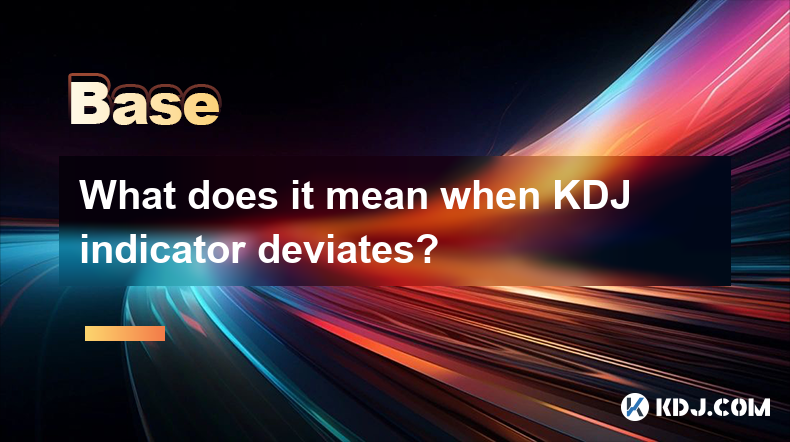
What does it mean when KDJ indicator deviates?
Apr 01,2025 at 03:08pm
The KDJ indicator, also known as the Stochastic Oscillator, is a popular technical analysis tool used in the cryptocurrency market to predict price movements. When the KDJ indicator deviates, it means that the current price of a cryptocurrency is moving away from its typical range, as indicated by the KDJ lines. This deviation can signal potential trend...

In what aspects is Chainlink decentralized?
Apr 02,2025 at 05:49pm
Chainlink is a decentralized oracle network that plays a crucial role in connecting smart contracts on blockchain networks with real-world data. Its decentralization is reflected in multiple aspects, ensuring the network's security, reliability, and integrity. This article delves into the various ways Chainlink achieves decentralization, including its n...

How does Chainlink connect smart contracts with real-world data?
Apr 02,2025 at 03:56pm
Chainlink is a decentralized oracle network that plays a crucial role in connecting smart contracts on blockchain platforms with real-world data. Smart contracts are self-executing contracts with the terms of the agreement directly written into code, but they can only interact with on-chain data. To access real-world data, such as stock prices, weather ...

What are the main functions of Chainlink?
Apr 02,2025 at 11:49pm
Chainlink is a decentralized oracle network that plays a crucial role in connecting smart contracts with real-world data and external APIs. The primary function of Chainlink is to facilitate the seamless integration of off-chain data into on-chain smart contracts, enabling them to execute based on real-world events and information. This integration is v...

How does Chainlink work?
Apr 03,2025 at 01:50am
Chainlink is a decentralized oracle network that connects smart contracts with real-world data and external APIs. It plays a crucial role in the blockchain ecosystem by enabling smart contracts to interact with data outside their native blockchain environment. This connectivity is essential for smart contracts to execute based on real-world events and d...

How to choose the calculation period of KDJ indicator?
Apr 02,2025 at 01:00pm
The KDJ indicator, also known as the Stochastic Oscillator, is a popular technical analysis tool used by cryptocurrency traders to identify potential buy and sell signals. The calculation period of the KDJ indicator is crucial in determining its effectiveness in predicting market trends. In this article, we will explore the factors to consider when choo...

What does it mean when KDJ indicator deviates?
Apr 01,2025 at 03:08pm
The KDJ indicator, also known as the Stochastic Oscillator, is a popular technical analysis tool used in the cryptocurrency market to predict price movements. When the KDJ indicator deviates, it means that the current price of a cryptocurrency is moving away from its typical range, as indicated by the KDJ lines. This deviation can signal potential trend...
See all articles























































































